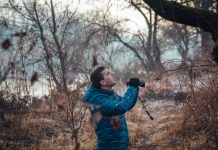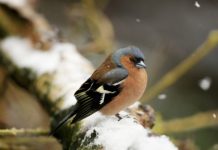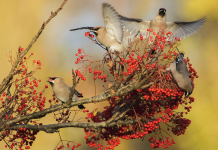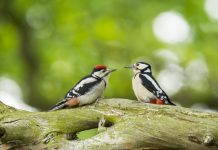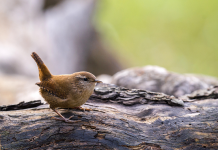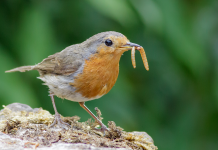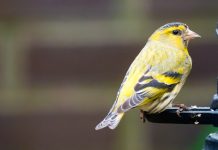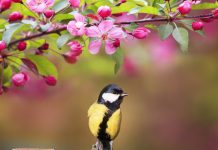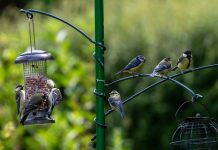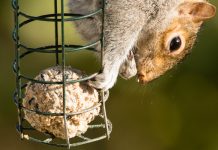Birdsong foamed in the hour-before-dawn garden.
– David Mitchell
May is the most magical of months. Day by day, the countryside is beginning to transform. Lanes are lined with cow parsley, fields are filling with buttercups, fresh lime-green woodlands are carpeted with bluebells and hedgerows are festooned with the blossom of apples and hawthorns. Meanwhile, gardens are gearing up for blooming to begin in earnest.
May is also one of the most exciting months in the birding calendar. With birds little and large beginning to hatch and fledge all around, and the first summer visitors soon to arrive, it’s well worth keeping your eyes peeled – and your camera handy to catch that special snap for #SnappyBeaks!

Last week, I heard my first cuckoo of the season, and saw the first swallow; skimming low over a field of wheat to pick off insects. Now is the time to be looking and listening out for the return of summer visitors including swallows, swifts, house martins and cuckoos. But also smaller, less well-known summer migrants such as willow warblers, wheatears, whitethroats and blackcaps.
Delve into this month’s Your Happy Beaks Garden to discover birds to spot this month and what you should be doing in your garden in May!
Garden Birds to Spot in May
House sparrow

Though house sparrows can be seen all year round, if you’re lucky, you might be getting up close and personal with them at this time of year. As the name suggests, they love to breed on and around houses, such as under the eaves. House sparrows are highly sociable birds, often nesting in colonies and travelling in flocks. They are also bold and opportunistic, living closely alongside humans and often flitting down to scavenge crumbs from café seating areas – sometimes while there are still people at the table!
However, these cheeky, chattering birds have undergone dramatic declines in recent decades, particularly in urban areas. House sparrow populations in London fell by nearly two thirds just between 1994 and 2004. You can encourage house sparrows by providing nest boxes and mealworms – the young need a high-protein insect diet for the best chance of survival.
Did you know?
- House sparrows are incredibly adaptable, able to make a home almost anywhere. They have been found breeding everywhere from 14,000ft up in the Himalayas to 2000ft underground in a coalmine near Doncaster. They love to nest in buildings, such as railway stations, factories and crevices in homes, and often re-use old house martin nests.
- Most house sparrows lay two or three clutches of eggs each year – sometimes even four. The female starts to lay her next clutch of eggs within days of the previous brood leaving the nest. How exhausting!
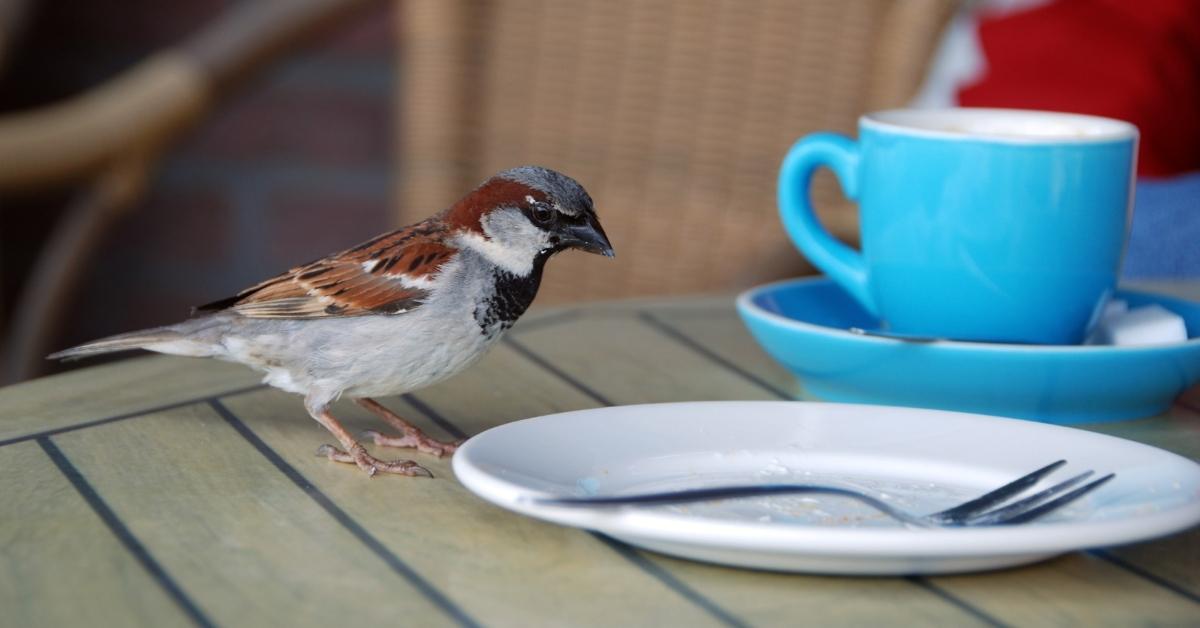
Blackbird
A key player in the dawn and dusk choruses, blackbirds can often be heard at this time of year, proclaiming their rich, fruity song from a lofty perch. Male blackbirds are jet-black with a contrasting yellow beak and ring around the eye, whilst females are dark brown and juveniles a mottled brown. Feeding mainly on worms and caterpillars, blackbirds are often seen hopping about on lawns, occasionally tilting their head towards the ground to listen for worms beneath the surface. You can encourage blackbirds by offering fruit or mealworms on a ground feeding tray.

Did you know?
- Blackbirds aren’t always black birds! Sometimes, they may have patches of pure white in their plumage – these are called leucistic blackbirds. Though leucism is poorly understood, it is thought to be caused by a genetic mutation and particularly affects male blackbirds and blackbirds in urban areas. It has also been seen in crows, jackdaws and house sparrows.
Collared dove
A pair of collared doves have been regular visitors to my bird bath in recent weeks, swooping down to take long sips from the water’s edge sometimes several times a day. Smaller and daintier than the woodpigeon, collared doves are elegant, beautiful and well-behaved birds. Though they have certainly made themselves at home here, collared doves aren’t actually native to the UK – they originate from Turkey and the Balkans, and didn’t arrive in Britain until the 1950s. Since then their range has continued to grow, now stretching from inside the Norwegian Arctic Circle in the north right down to the Canary Islands in the south.
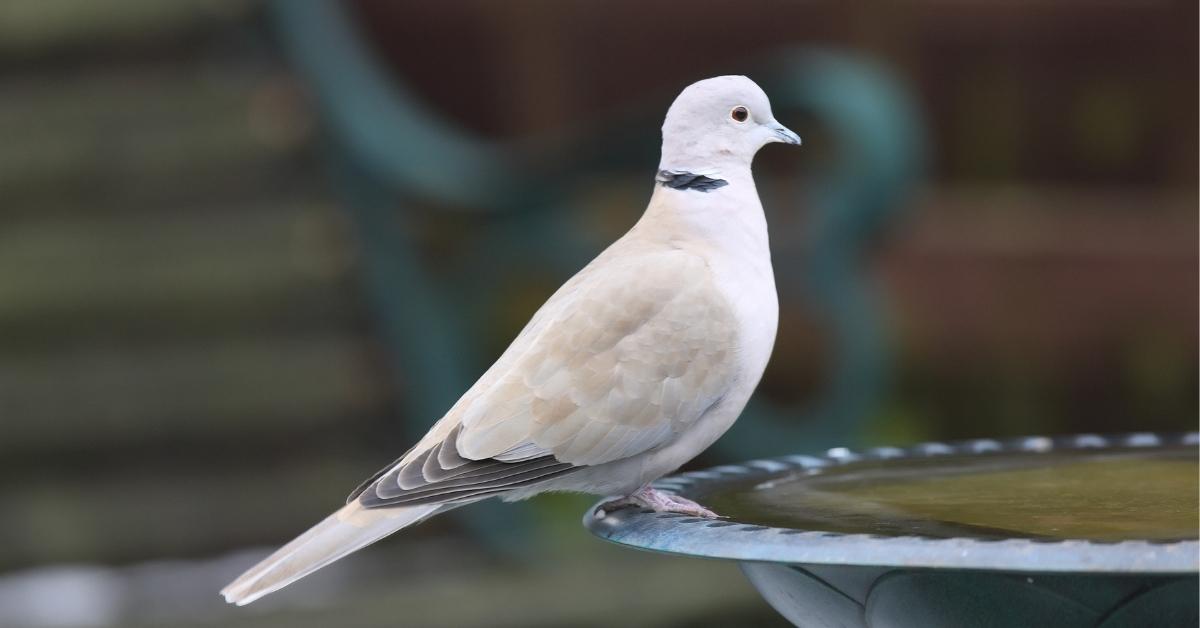
Did you know?
- Collared doves mate for life – this is why a pair of doves is a symbol of love.
- The pair take turns to incubate the eggs, swapping over at dawn and dusk. The female takes the day shift while the male takes the night shift.
- Collared dove nests are generally within a kilometre of human habitation. They nest near our towns and villages for easy access to food.
Gardening in May
As we enter May it becomes one of the busiest months in the garden. Seeds can be sown directly, lawns can be mowed, and fingers crossed sunshine can be enjoyed.
Veg Gardens
- Earth up potatoes, covering any emerging shoots with soil
- Hoe off weeds
- Sow French and runner beans outdoors and continue successional sowing of salads
- Gradually harden off veg plants raised indoors, ready for planting out.
Flowers & Bulbs
- Harden off tender perennials that have been kept in the greenhouse over winter, ready for planting out in the second half of the month
- Plant out dahlias and cannas
- Plant up summer bedding displays, containers and hanging baskets towards the end of the month, once risk of frosts has passed. If you have a greenhouse, containers and baskets can be planted up now ready for moving outside later in May.
- Prune spring-flowering shrubs such as forsythia and Chaenomeles once they have finished flowering
- Direct sow annuals to fill gaps in borders
- Feed spring bulbs such as daffodils and tulips with a liquid feed to encourage a great display next year, and lift and divide any overcrowded clumps.
Wildlife Gardening
- Install a bird bath. The spring has been dry, warmer temperatures are on the way and raising a brood is thirsty work. So if you haven’t already, this is the perfect time to install a bird bath in your garden. Read our helpful bird bath guide to find out why they’re so important, how to choose one and the best place to put it.
- Take part in No Mow May! Save time and help nature by leaving the lawnmower in the shed this month! If that seems too daunting, try leaving just an area of lawn unmown, perhaps around a tree or in a quiet corner of the garden. This will create habitat for biodiversity and give lawn wildflowers such as daisies, buttercups, bugle, dandelions, clover and speedwell a chance to flower, providing valuable food for pollinators.
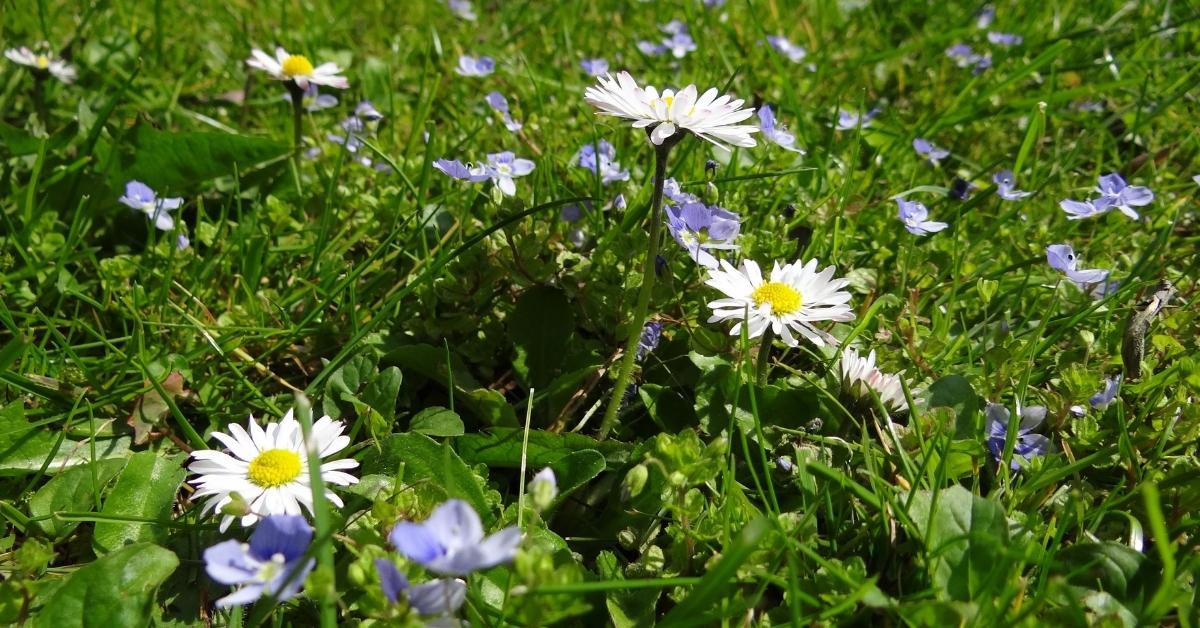
Get Snappy with Us!
It’s so simple to enter! Just share your photo with us on any of our social media platforms, using the hashtag #SnappyBeaks. You can enter via Instagram, Facebook, Messenger or Twitter. As long as your photo is related to bird feeding or wild birds in some way, we’ll consider it as a valid entry. Learn more about our #SnappyBeaks competition here.
Header image: meadow pipit (Canva)

